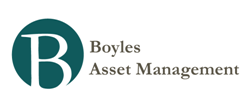GROUPTHINK - By Jonah Lehrer
In the late nineteen-forties, Alex Osborn, a partner in the advertising agency B.B.D.O., decided to write a book in which he shared his creative secrets. At the time, B.B.D.O. was widely regarded as the most innovative firm on Madison Avenue. Born in 1888, Osborn had spent much of his career in Buffalo, where he started out working in newspapers, and his life at B.B.D.O. began when he teamed up with another young adman he’d met volunteering for the United War Work Campaign. By the forties, he was one of the industry’s grand old men, ready to pass on the lessons he’d learned. His book “Your Creative Power” was published in 1948. An amalgam of pop science and business anecdote, it became a surprise best-seller. Osborn promised that, by following his advice, the typical reader could double his creative output. Such a mental boost would spur career success—“To get your foot in the door, your imagination can be an open-sesame”—and also make the reader a much happier person. “The more you rub your creative lamp, the more alive you feel,” he wrote.
“Your Creative Power” was filled with tricks and strategies, such as always carrying a notebook, to be ready when inspiration struck. But Osborn’s most celebrated idea was the one discussed in Chapter 33, “How to Organize a Squad to Create Ideas.” When a group works together, he wrote, the members should engage in a “brainstorm,” which means “using the brain to storm a creative problem—and doing so in commando fashion, with each stormer attacking the same objective.” For Osborn, brainstorming was central to B.B.D.O.’s success. Osborn described, for instance, how the technique inspired a group of ten admen to come up with eighty-seven ideas for a new drugstore in ninety minutes, or nearly an idea per minute. The brainstorm had turned his employees into imagination machines.
The book outlined the essential rules of a successful brainstorming session. The most important of these, Osborn said—the thing that distinguishes brainstorming from other types of group activity—was the absence of criticism and negative feedback. If people were worried that their ideas might be ridiculed by the group, the process would fail. “Creativity is so delicate a flower that praise tends to make it bloom while discouragement often nips it in the bud,” he wrote. “Forget quality; aim now to get a quantity of answers. When you’re through, your sheet of paper may be so full of ridiculous nonsense that you’ll be disgusted. Never mind. You’re loosening up your unfettered imagination—making your mind deliver.” Brainstorming enshrined a no-judgments approach to holding a meeting.
Brainstorming was an immediate hit and Osborn became an influential business guru, writing such best-sellers as “Wake Up Your Mind” and “The Gold Mine Between Your Ears.” Brainstorming provided companies with an easy way to structure their group interactions, and it became the most widely used creativity technique in the world. It is still popular in advertising offices and design firms, classrooms and boardrooms. “Your Creative Power” has even inspired academic institutes, such as the International Center for Studies in Creativity, at Buffalo State College, near where Osborn lived. And it has given rise to detailed pedagogical doctrines, such as the Osborn-Parnes Creative Problem Solving Process, which is frequently employed by business consultants. When people want to extract the best ideas from a group, they still obey Osborn’s cardinal rule, censoring criticism and encouraging the most “freewheeling” associations. At the design firm IDEO, famous for developing the first Apple mouse, brainstorming is “practically a religion,” according to the company’s general manager. Employees are instructed to “defer judgment” and “go for quantity.”
The underlying assumption of brainstorming is that if people are scared of saying the wrong thing, they’ll end up saying nothing at all. The appeal of this idea is obvious: it’s always nice to be saturated in positive feedback. Typically, participants leave a brainstorming session proud of their contribution. The whiteboard has been filled with free associations. Brainstorming seems like an ideal technique, a feel-good way to boost productivity. But there is a problem with brainstorming. It doesn’t work.
...................
Related book: Imagine
- Links
Ben Graham on How to Handle Your Money (LINK) Brian Grazer on Charlie Rose discussing his book, A Curious Mind: The Secret to a Bigger Life (video) (LINK) Brent Schlender and Rick Tetzeli on Charlie Rose discussing their book, Becoming Steve Jobs (video)...
- Finally: A Business Memoir That Owes More To Nassim Taleb Than To Jack Welch
An article about the book Creativity, Inc., which Michael Mauboussin called (via Twitter) the best business book he’s read in a long time. Link to article: Finally: A Business Memoir That Owes More To Nassim Taleb Than To Jack WelchIn the Uffizi gallery...
- Ray Dalio Interview With The Academy Of Achievement (october 2012)
A big thanks to Remmelt for passing this along. [Update: And another big thanks to Jean-Pierre for passing the iTunes link to this along, HERE.] Link to: Ray Dalio Interview ………. Excerpt:You've spoken about individuals who shape the world we...
- Eric Topol On Econtalk
Eric Topol of the Scripps Research Institute and the author of The Creative Destruction of Medicine talks with EconTalk host Russ Roberts about the ideas in his book. Topics discussed include "evidence-based" medicine, the influence of the pharmaceutical...
- Steve Jobs 1996 Interview (february 1996 Issue Of Wired)
Found via @farnamstreet. Lincoln did not have a Web site at the log cabin where his parents home-schooled him, and he turned out pretty interesting. Historical precedent shows that we can turn out amazing human beings without technology. Precedent also...

